Interior design is more than just arranging furniture and picking out paint colors; it is an essential aspect of creating a living space that not only looks appealing but also functions efficiently and feels comfortable. The impact of interior design on your home is profound, affecting everything from your mental well-being to the value of your property. In this comprehensive article, we will delve into the various ways interior design influences your home environment and your life.
Aesthetic Appeal
Personal Expression
Interior design allows homeowners to express their personality and style. Whether you prefer a minimalist aesthetic, a cozy rustic look, or a vibrant modern space, your home can be a reflection of who you are. This personal touch not only makes your home unique but also enhances your emotional connection to the space.
Creating Ambiance
The choice of colors, textures, and lighting plays a crucial role in setting the mood of a room. Warm tones and soft lighting can create a cozy, inviting atmosphere, while cool colors and sleek, modern fixtures can evoke a sense of calm and sophistication. The ambiance of a room can significantly impact how you and your guests feel while spending time there.
Functional Design
Space Utilization
Effective interior design optimizes the use of space, making even small areas feel open and uncluttered. This involves strategic furniture placement, multi-functional pieces, and thoughtful layouts that enhance the flow of movement. Good design ensures that every inch of your home is used efficiently, improving the overall functionality of the space.
Enhancing Comfort
Comfort is a key component of good interior design. Ergonomically designed furniture, appropriate lighting, and climate control contribute to a comfortable living environment. A well-designed home adapts to your lifestyle needs, making daily activities easier and more enjoyable.
Psychological Impact
Mood and Mental Health
The design of your home can have a significant impact on your mental health and well-being. Bright, airy spaces with plenty of natural light can boost your mood and energy levels, while dark, cramped environments may lead to feelings of depression and lethargy. Incorporating elements of nature, such as plants and natural materials, can also reduce stress and promote relaxation.
Sense of Order
A well-organized home can provide a sense of order and control, reducing stress and anxiety. Interior design that includes ample storage solutions and decluttering strategies helps maintain a tidy and serene environment, contributing to a clearer mind and a more peaceful living experience.
Economic Impact
Property Value
Investing in quality interior design can significantly increase the value of your home. Modern, well-maintained, and aesthetically pleasing interiors are attractive to potential buyers and can lead to a higher resale price. Even small updates, like a fresh coat of paint or updated fixtures, can have a substantial return on investment.
Energy Efficiency
Thoughtful interior design can also lead to energy savings. Proper insulation, energy-efficient windows, and the strategic placement of windows and doors to maximize natural light can reduce heating, cooling, and lighting costs. These savings not only benefit your wallet but also contribute to a more sustainable lifestyle.
Social Impact
Hosting and Entertaining
A beautifully designed home is perfect for hosting gatherings and entertaining guests. Spaces designed for social interaction, such as open-plan living areas and comfortable seating arrangements, can make your home a hub of social activity. This not only enhances your social life but also creates lasting memories with friends and family.
Community Perception
Your home’s interior design can also influence how others perceive you. A well-designed home reflects attention to detail and care, potentially increasing your social status within your community. It can be a source of pride and a testament to your taste and sophistication.
Practical Tips for Effective Interior Design
Understand Your Needs
Before embarking on any interior design project, it’s essential to understand your needs and lifestyle. Consider how you use each space, what activities take place there, and what you need to improve comfort and functionality.
Set a Budget
Determine a budget for your interior design project. This helps prioritize spending on essential elements and prevents overspending on non-essential items.
Hire a Professional
While DIY projects can be fun and cost-effective, hiring a professional interior designer can provide expert insights and ensure a cohesive and polished look. Designers have access to resources and products that may not be available to the general public, and their expertise can save time and prevent costly mistakes.
Incorporate Personal Touches
Incorporate items that have personal significance, such as family heirlooms, travel souvenirs, or handmade art. These touches add character and uniqueness to your home.
Stay Updated on Trends
While it’s important to design a home that reflects your personal style, staying updated on current design trends can provide inspiration and ideas. Incorporating modern elements can also help keep your home looking fresh and contemporary.
Why Is Interior Design Important for Your Home?
Interior design is important for your home because it enhances functionality, aesthetic appeal, mental well-being, property value, energy efficiency, and social interactions. Here’s how:
Enhancing Functionality
- Efficient Space Utilization: Strategic planning maximizes the use of available space, making even small areas feel larger and more open.
- Improving Flow and Accessibility: Good design ensures clear pathways and accessible arrangements, making movement within the home easier and safer.
Aesthetic Appeal
- Reflecting Personal Style: Interior design allows you to express your personality through colors, furniture, and decorations, making your home unique and welcoming.
- Creating Ambiance: Elements like lighting, colors, and textures set the mood of a room, influencing how you feel within the space.
Boosting Mental Well-being
- Enhancing Comfort: Ergonomic furniture, proper lighting, and climate control create a comfortable living environment, reducing stress.
- Promoting Positive Emotions: Bright, airy spaces and natural elements can boost mood and energy levels, fostering a sense of calm and relaxation.
Increasing Property Value
- Attracting Buyers: A professionally designed home is more appealing to potential buyers, often commanding a higher resale price.
- Enhancing Marketability: Timeless design elements and high-quality materials increase the desirability and marketability of your home.
Promoting Energy Efficiency
- Optimizing Natural Light: Maximizing natural light reduces the need for artificial lighting, cutting down on energy costs.
- Sustainable Choices: Using energy-efficient appliances and eco-friendly materials benefits the environment and lowers utility bills.
Facilitating Social Interaction
- Creating Social Spaces: Well-designed living areas encourage family gatherings and social interactions, enhancing relationships.
- Enhancing Hosting Experience: Thoughtful design makes hosting guests easier and more enjoyable, creating a welcoming environment for social events.
Conclusion
The impact of interior design on your home extends far beyond aesthetics. It enhances functionality, comfort, and well-being, and can significantly influence your property’s value and your quality of life. By understanding the principles of good design and incorporating thoughtful elements into your living space, you can create a home that is not only beautiful but also a true sanctuary that supports your lifestyle and nurtures your soul.



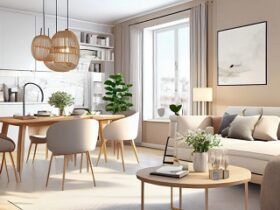

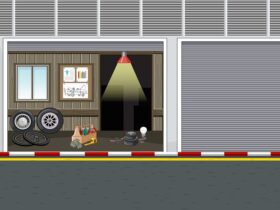
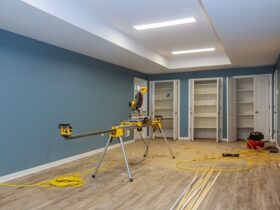
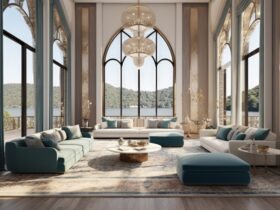
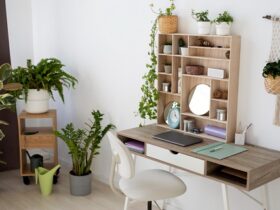

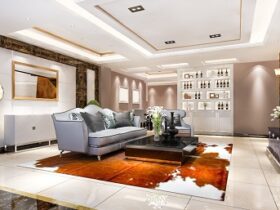
Find Us on Socials